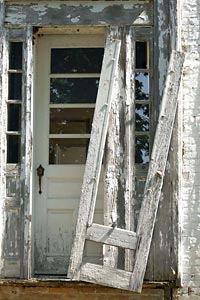Lead-Based Paint and Demolition
Under the Lead Renovation, Repair, and Painting Rule, contractors who renovate or partially demolish pre-1978 residential buildings must be lead-safe certified by EPA and use lead-safe practices. This rule does not apply to total demolition of a structure. However, we recommend the use of lead-safe practices during total demolition activities.

Older homes and buildings are more likely to contain lead-based paint.
The most common way that lead gets into the body is through dust. The process of demolishing older housing generates dust that includes lead from interior and exterior lead-based paint.
This lead dust eventually falls and settles on surfaces. Demolition workers inhale this lead dust and also track the lead dust to their homes and communities.
Through inhalation and tracking, demolition workers, their families and communities, are all exposed to the hazardous effects of lead.
Therefore, it is important for workers to minimize exposure to lead dust for themselves, their families, and their community. Lead-safe work practices minimize lead-based paint dust and debris generated during demolition activities.
- Containing dust inside the work area
- Using dust-minimizing work methods
- Conducting a careful cleanup during the demolition.
At a minimum, we suggest that surfaces should be wetted when possible to control the spread of leaded dust into the air.
